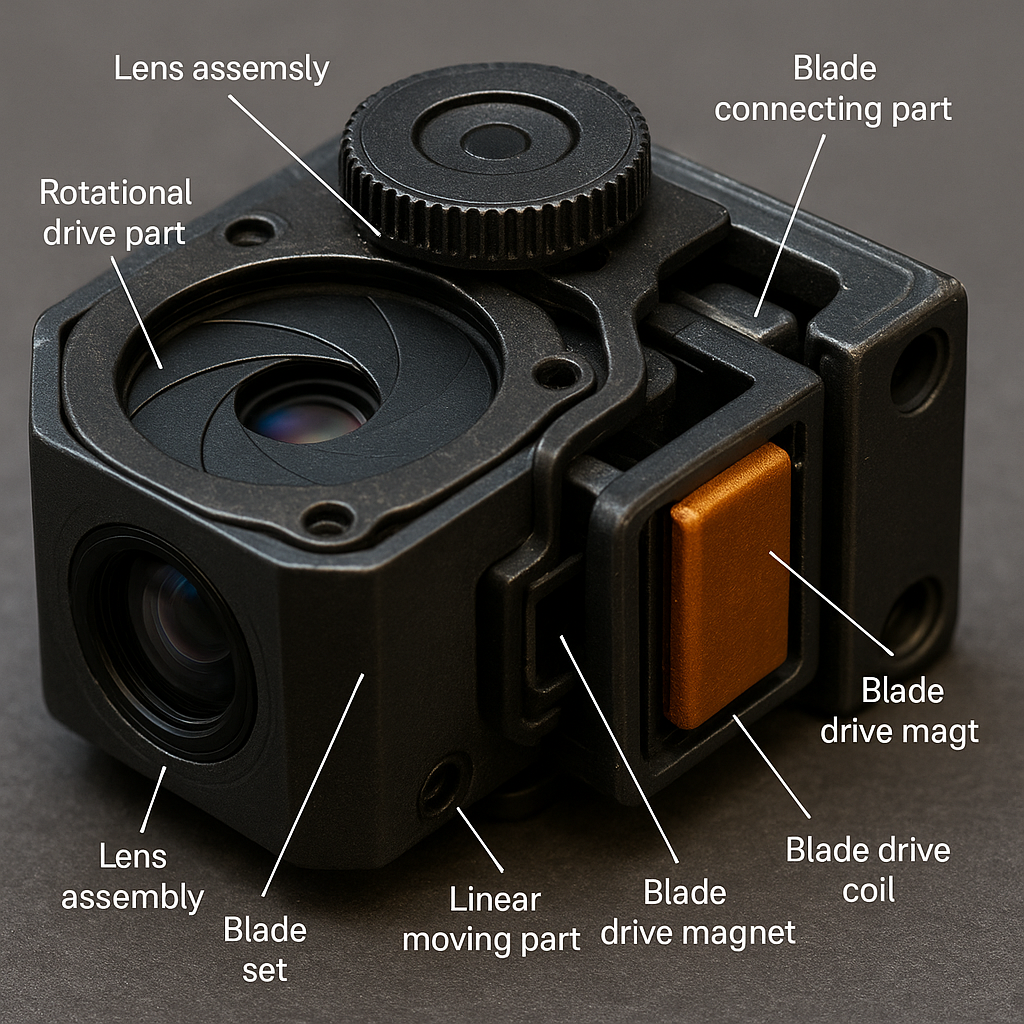Invented by CHU; Kyung Sung, KIM; Min Ook, WON; Dong Joon, LEE; Seung Hak
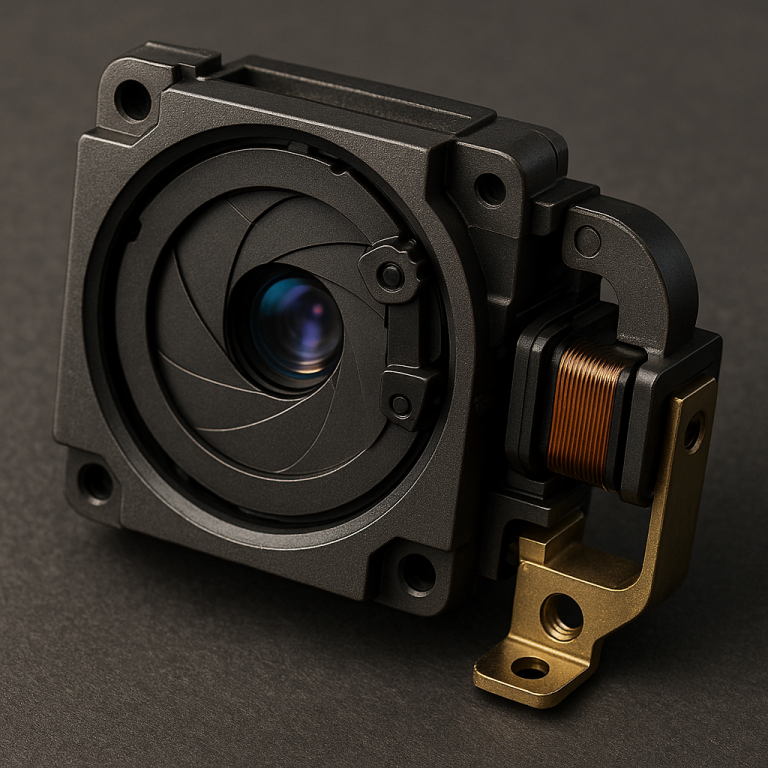
Modern cameras are everywhere, from phones to smart home gadgets. But what makes them better each year? It’s not just better sensors—it’s also new ways to control light and image quality in tiny spaces. In this article, we’ll dive into a new camera module patent that brings big changes to how cameras work, especially in small devices. Let’s break it down so anyone can understand the background, science, and the simple but smart inventions inside this new camera module.
Background and Market Context
Think about the last phone or gadget you bought. Chances are, you saw a lot of talk about camera quality. That’s because people want sharper, brighter, and more flexible cameras in everything they use—from phones and tablets to laptops and even smart watches. As electronic devices get smaller and lighter, camera makers have a tough job. They need to fit better cameras into less space, with fewer parts using less power. This is not easy.
In the past, big cameras like DSLRs had something called a mechanical aperture—a group of tiny blades that open and close to let in more or less light. This helps you take good pictures in bright sun and also in the dark. But these mechanical parts are big, heavy, and use a lot of energy. As people want slimmer and lighter devices, using the old ways to control the camera’s aperture just does not work.
On top of this, our devices are always with us and need to save battery. No one wants their phone battery drained just because the camera is on standby. That’s why inventors are finding new ways to make camera modules that not only fit in small spaces but also use less energy and work fast.
The new patent we’re looking at answers these needs. It creates a camera module that uses clever magnet tricks to control the camera’s aperture without needing big, heavy, or power-hungry parts. The result? A camera module that can give you DSLR-like control over your photos in your favorite slim device, all while helping your battery last longer.
This move is not just about phones. Cameras with smart, small apertures are needed in tablets, laptops, wearables, smart home devices, and even cars. As more gadgets need better images, this kind of invention is set to change the market in a big way. Companies that can offer great photos in small, light, long-lasting devices will stand out.
To sum up, this patent is born from the need to squeeze more quality and control into the tiniest spaces, all while using less power. That’s what the market wants, and that’s what this invention delivers.
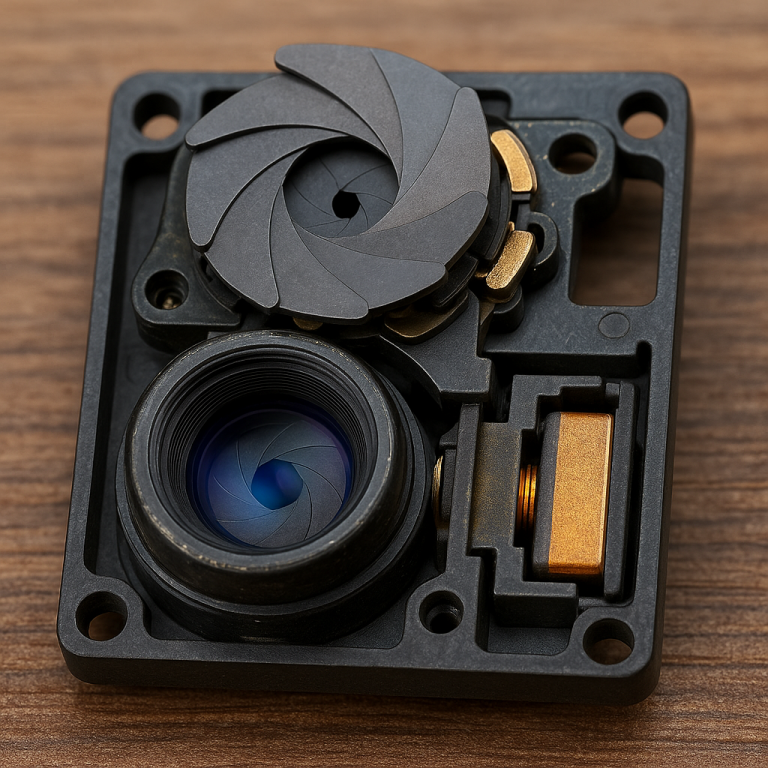
Scientific Rationale and Prior Art
To really get why this new camera module is special, let’s talk about how camera apertures have worked so far, and what problems inventors have faced.
In big cameras, the aperture is made of several thin blades that move in a circle to make the hole bigger or smaller. This controls how much light gets in. More light for dark scenes, less light for bright. In professional cameras, this works great because there is enough space for motors and gears. But in small gadgets, these parts are too large. Plus, they use power all the time, even just to stay in one spot. That’s not good for battery life.
There have been attempts to make smaller apertures for phones by using simplified mechanical parts or even using liquid crystals to change the amount of light. But these often have limits. They may only offer two settings (open or closed), or they still use more electricity than is ideal. Some try using magnetic coils, but these often need power just to keep the aperture still. That means more battery drain.
The big challenge has been finding a way to make an aperture that:
– Fits in a tiny space,
– Can be set to different positions (not just open or closed),
– Only uses power when you change the setting, not to keep it in place,
– Works reliably over many years and uses simple, tough parts.
One common method is to use something called a voice coil motor. This uses electricity to move magnets, which then move parts like the blades. But the problem here is that to keep the blades in place, you need to keep sending power. If you stop, the blades can move out of place. This is not good for saving power.
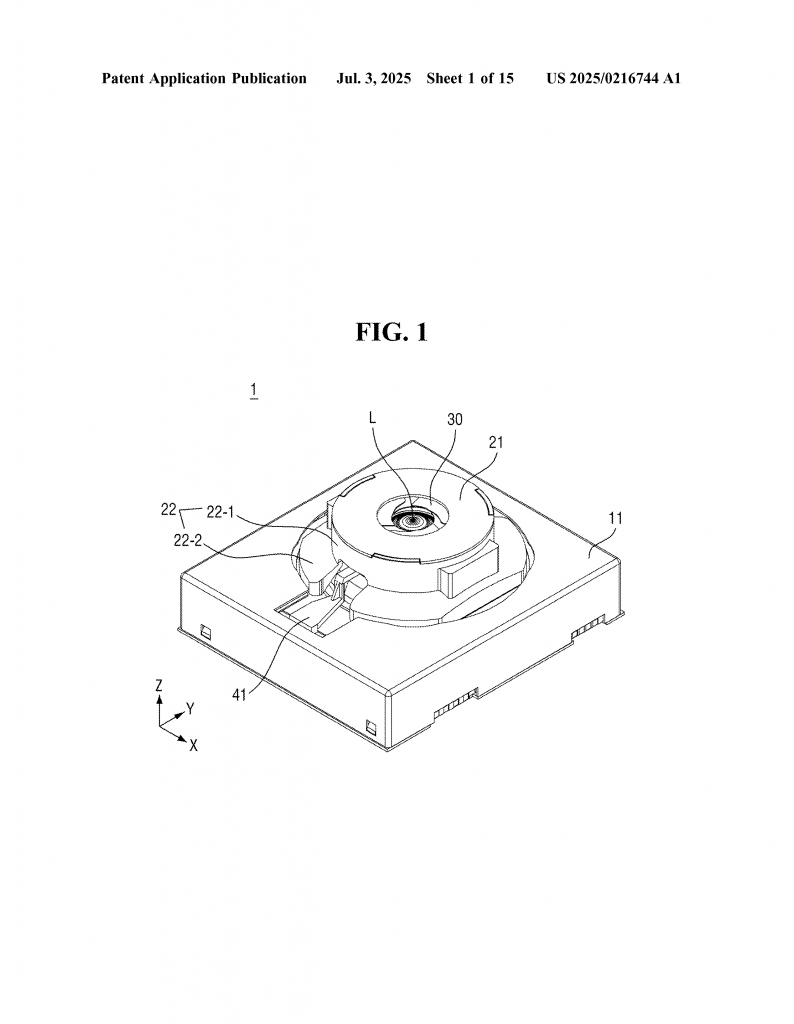
Other inventors have tried using special springs or friction, but these can wear out. Some patents show using magnets to hold things in place, but often the magnets are not arranged in a way that lets you have more than two positions, or they need complicated controls.
So, while the science of using magnets and electric coils is well known, what’s been missing is a way to:
– Convert simple linear (back-and-forth) movement into the rotary (round) movement the blades need,
– Fix the blades in more than two spots using only magnets, and
– Only use power when moving, not when holding.
This is where the new invention stands out. By mixing the idea of a magnet-powered drive with a clever blade and magnet layout, it solves all these problems at once. The patent uses a smart combo of moving magnets, fixed magnets, and special shapes to get the job done. That’s a leap over the old ways.
In short, while the building blocks—magnets, coils, and moving blades—are not new, this way of putting them together is. It lets you have a small, multi-step aperture that saves power and is tough enough for everyday gadgets. That’s the science and the history behind this new idea.
Invention Description and Key Innovations
Now, let’s look at what this new camera module actually does and what makes it so different.
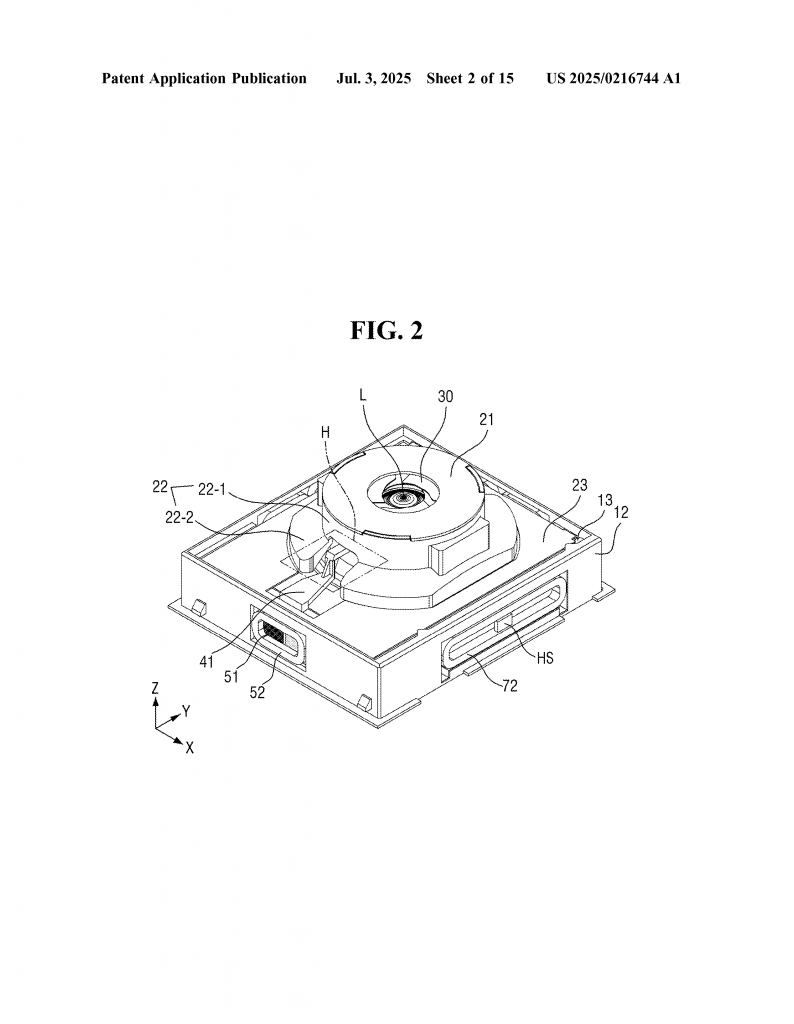
At the heart of this invention is a camera module that can change its aperture—the hole that lets light in—using a smart magnet system. Instead of big motors or always-on power, it uses a special setup so it only needs power when you want to change the aperture. Once it’s set, it stays put with no extra energy.
Here’s how it works in simple steps:
First, there are several blades arranged above the camera lens. These blades can move to make the hole bigger or smaller. To move the blades, the module uses something called a “rotational drive part.” This part is linked to the blades. But instead of using a motor to spin it, it gets rotated by a “blade connecting part” attached to a “linear moving part.” Picture it like a train: the linear moving part goes back and forth, and its action gets turned into a twist that moves the blades.
Now, how does the linear moving part move? That’s where the magnets and coils come in. There is a magnet on the moving part and a coil (like a tiny electromagnet) fixed in place. When you send an electric current through the coil, it pushes or pulls the magnet, moving the part in a straight line. Because of the way the link is set up, moving this part back and forth twists the blades open or closed.
The really clever part comes next. The module has fixed magnets set in special spots along the path. When the moving part lines up with one of these magnets, the attraction or repulsion between the magnets holds everything in place. That means, once you set the aperture, it stays there without needing more power.
Even more, the magnets are set up so you can have more than just open and closed. You can have three or more fixed positions—like small, medium, or large apertures. This gives you the kind of control over light that you find in big cameras, all in a small device.
The patent also handles the need to keep the module small. The moving parts all fit into a compact design, with special grooves and covers that don’t add extra height or width. The whole system can be added to tiny devices without making them thicker or heavier. The only time power is used is when the user (or the camera program) wants to change the aperture. When not moving, the magnets do all the work of keeping the blades in place.
Other special touches in the design include:
– The use of dual-pole magnets to make the movement smooth and strong.
– The ability to combine this aperture system with other camera features like autofocus and image stabilization—so you don’t have to give up any features to get this new control.
– Simple assembly methods that make it easy for manufacturers to add this to a range of devices, from phones to smart home cameras.
– The use of tough materials so the blades and magnets last for years without wearing out.
The invention also describes how the module can be used in all sorts of devices, like phones, tablets, laptops, wearables, smart home devices, and even car cameras. This flexibility means it could become a standard part of the tech we use every day.
In short, the key innovations are:
– Turning a straight push or pull into the rotary movement needed for aperture blades, using a simple magnet-and-coil system.
– Using fixed magnets to hold the aperture in several positions, so no power is needed except when changing settings.
– Fitting all of this into a very small space, opening the door for better cameras in slim devices.
This is a big leap over the old ways and gives device makers a powerful tool for making better cameras without trade-offs in size, battery, or features.
Conclusion
This new camera module patent shows how smart design and simple science can solve tough problems in today’s tech world. By using clever magnets and simple moving parts, it gives us better control over camera apertures in even the smallest gadgets—and does it while saving power and space. As our devices get smaller and more powerful, inventions like this are what make better photos possible in every part of our lives.
If you’re a maker, a tech company, or just someone who loves great photos, this invention is worth watching. It could soon be inside the phone or gadget in your pocket, helping you take great pictures wherever you go. That’s the power of smart patents—and why understanding the ideas behind them matters.
Click here https://ppubs.uspto.gov/pubwebapp/ and search 20250216744.
